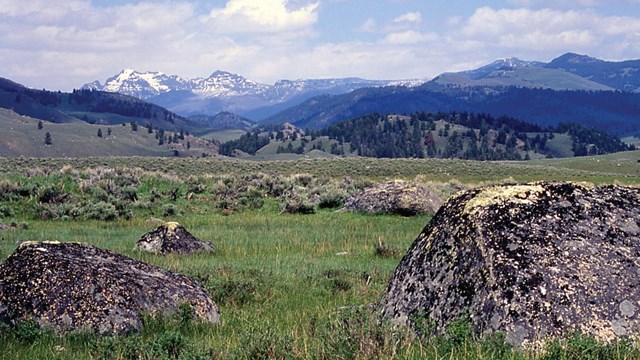
NPS / R. Lake This small range of mountains, located just west of Heart Lake, is completely contained within the boundaries of Yellowstone National Park. In 1871, F.V. Hayden named present-day Mount Sheridan "Red Mountain." In 1872, members of the second Hayden Survey transferred that name to the entire range. The name was "derived from the prevailing color of the volcanic rocks which compose them" (Hayden, Twelfth Annual Report, p. 470). In 1878, Henry Gannett reported that there were 12 peaks in the range, with 10,308-foot-high Mount Sheridan being the highest. Factory HillFactory Hill is a 9,607-foot-high peak in the Red Mountains. By 1876, the peak was called "Red Mountain," a name that had originally been given to present-day Mount Sheridan by members of the 1871 Hayden Survey. Eventually, the name "Red" was applied to the entire small mountain range. Members of the Hague parties named Factory Hill in about 1885 because N.P. Langford's description of steam vents near the mountain. In the June 1871 issue of Scribner's, Langford had written: "Through the hazy atmosphere we beheld, on the shore of the inlet opposite our camp, the steam ascending in jets from more than fifty craters, giving it much the appearance of a New England factory village" (p. 120). |
Last updated: April 29, 2025


